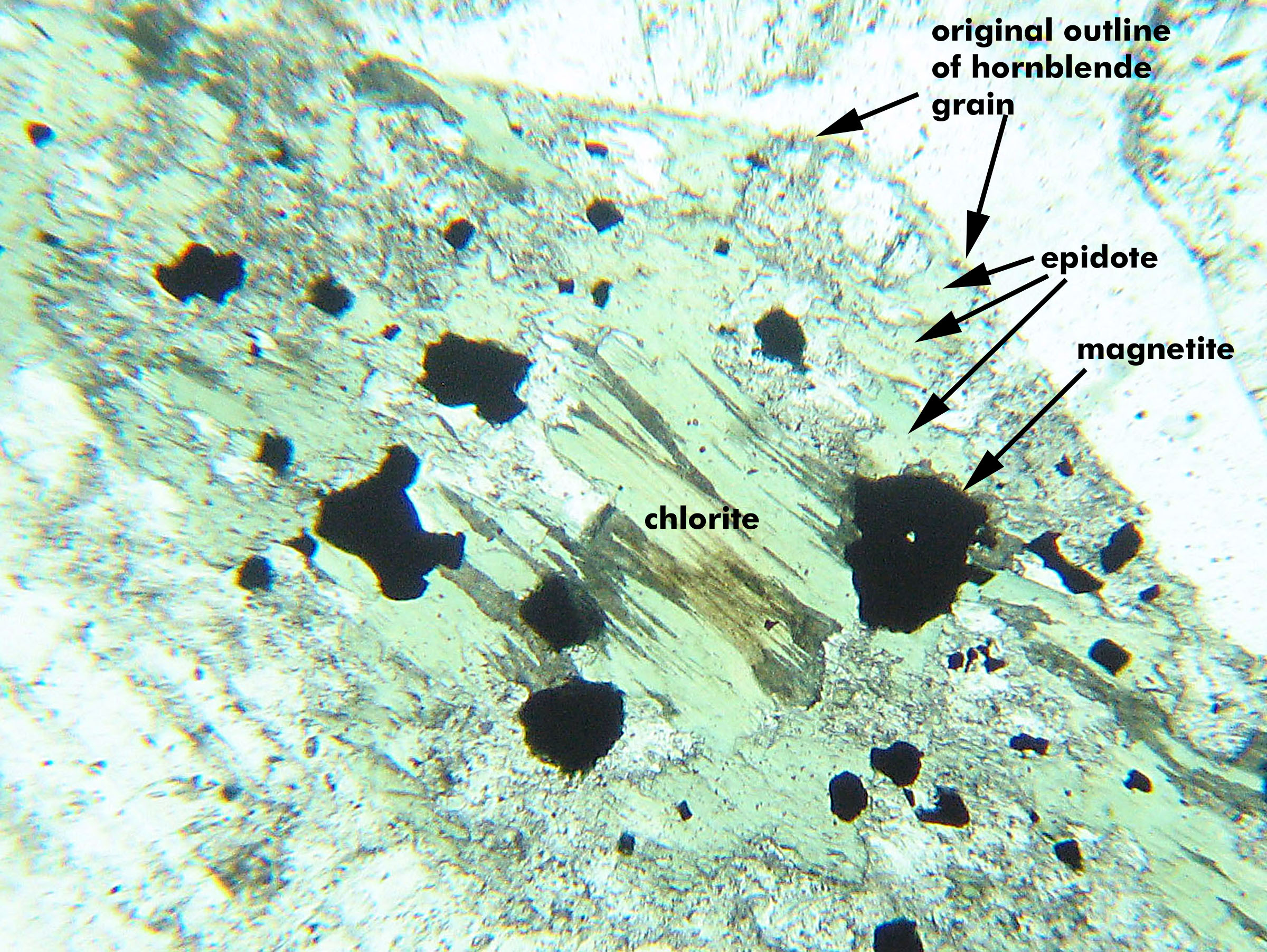|
Chlorite
Occurrence
|
Chlorite is common as a secondary mineral,
forming after mafic minerals, in rocks of many types. It may
also be a primary mineral in low- to medium-grade metamorphic
rocks. |
Composition
|
Although often thought of as being the green-colored
equivalent of biotite, it does not have the same atomic arrangement
as other micas. Its chemistry is quite variable. |
Identification
Important properties
|
·Overlooked - although common, chlorite is, in many cases,
a nondescript greenish mineral that is easily overlooked because
it is secondary and does not form large well-developed crystals. |
|
·Habit
- when secondary, typically occurs as flake-like crystals (generally
anhedral) or replacement patches containing small flakes or scales.
It may partially replace grains of biotite
or other minerals, appearing to "eat at them" along
cleavage traces . When primary , chlorite has habit similar to
biotite or muscovite. |
|
·Color - generally pleochroic,
ranging from colorless to pale to medium green. Sometimes darker
green or (rare) other colors. |
|
·Interference
colors are distinctive: lower first order, and often anomalous. Anomalous blue, purple
or brown are quite common. |
|
·Cleavage - chlorite may show a single good cleavage. |
|
·Biaxial (- or +); when +, it
is one of the few sheet silicates that is length fast. Interference
figures often difficult to obtain. |
Similar minerals
|












